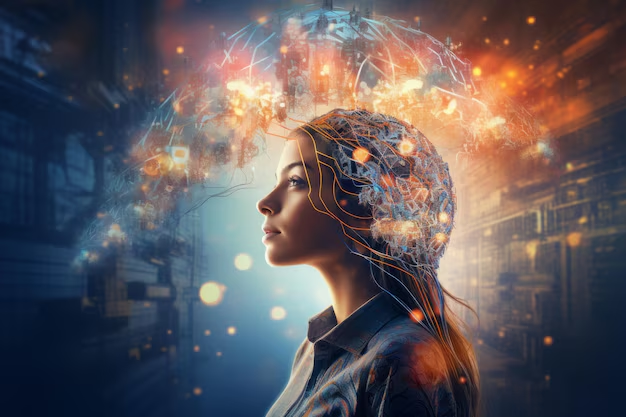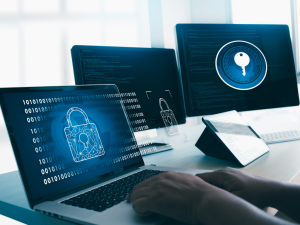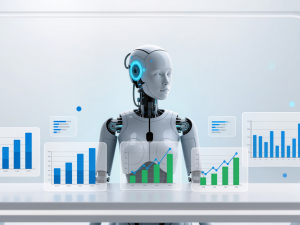Across campuses, mental health conversations have become as urgent as academic ones. Rising stress levels, burnout, and anxiety among students have pushed educators and EdTech innovators to search for new ways to intervene early before a quiet struggle turns into a crisis.
One approach gaining attention is the use of AI-driven mental health alerts. These systems analyse everything from login patterns to writing tone and survey responses to spot early signs of distress. The idea is simple but ambitious: use technology to detect when a student might need help sometimes even before they realise it themselves.
The potential is enormous. A timely alert could guide a struggling student toward counseling support, peer resources, or simple check-ins that prevent something far worse. But this innovation brings difficult questions too. How much should technology observe before it crosses into intrusion? Who owns this sensitive data? And can emotional wellbeing truly be measured by algorithms?
AI in education is no longer just about improving learning outcomes. It’s about understanding the learner’s mind, mood, and motivation. The challenge is making sure this understanding helps rather than harms.
How AI Detects Early Signs of Mental Distress
AI-driven mental health tools don’t look for illness; they look for change. Subtle shifts in behaviour, language, or engagement often reveal what a student might be feeling long before a crisis appears on the surface. That’s where EdTech platforms are beginning to step in not to diagnose, but to detect.
Usage Patterns and Digital Behaviour
A student’s online learning habits can say a lot. AI systems track activity on platforms when students log in, how long they stay engaged, and whether assignments are being submitted on time. A sudden drop in participation, repeated missed deadlines, or frequent late-night activity can signal stress, burnout, or emotional fatigue.
Instead of replacing counselors, these systems act like early-warning lights. When patterns shift sharply, an alert can quietly notify staff or prompt an automated message encouraging the student to reach out for support.
Language and Emotion Through NLP
Some platforms use Natural Language Processing (NLP) to understand changes in tone or emotion. By analysing text from discussion forums, essays, or chatbot conversations, AI can pick up cues that humans might miss repeated expressions of hopelessness, frustration, or disengagement.
It’s not about reading private messages but identifying broad emotional trends. For example, if a student who usually writes with confidence begins using phrases that sound withdrawn or negative, the system can flag that change as a sign to check in.
Surveys and Self-Assessments
AI also helps interpret data from wellbeing surveys and assessments. Students often complete mood check-ins or anonymous feedback forms, but reviewing hundreds of responses manually isn’t feasible. Algorithms can quickly identify patterns like an increase in stress-related responses or a spike in negative sentiment within a particular class or department.
That information helps universities adjust support services, deploy counselors more effectively, and track how campus-wide stress levels evolve over time.
Integration with Wearable Devices
Some initiatives go a step further by connecting with wearable technology. Devices that track sleep, physical activity, or heart rate can provide physiological insights into a student’s wellbeing. A sudden drop in sleep quality or irregular heart rate patterns may reflect rising anxiety or fatigue.
These readings don’t diagnose anyone, but they help build a fuller picture of mental health trends both individual and collective.
Building a Holistic View
Taken together, these tools offer something that traditional counseling systems can’t: scale. Counselors may see a few dozen students; AI can monitor thousands and detect shifts across entire campuses. Used responsibly, that reach could mean the difference between noticing a problem too late and offering support just in time.
But this same ability to see what others can’t raises an uneasy question. If technology can recognize when a student feels low or withdrawn, where does support end and surveillance begin?
The Ethical Dilemma: Support vs. Surveillance
AI’s promise in mental health sounds hopeful algorithms spotting distress early enough to help before it becomes dangerous. But the same technology that can save a life can also cross a line if used carelessly. The difference often comes down to intent and boundaries.
When used well, these systems open new doors for proactive care. They give educators insight into who might need help, especially in large campuses where one counselor can’t possibly notice every struggling student. But when used poorly, they risk turning schools into spaces of quiet surveillance where every click, message, or login becomes a data point in someone’s emotional profile.
The Case for AI as Support
AI-driven alerts can act as a lifeline for students who would never reach out for help on their own. Many young people hesitate to approach counselors due to stigma or fear of judgment. A discreet alert triggered by unusual patterns or concerning language can prompt timely human outreach that feels more like care than intervention.
These systems can also personalize support. Based on a student’s habits or self-reported mood, AI might suggest mindfulness exercises, stress-relief techniques, or campus resources tailored to their needs. The goal isn’t to label or diagnose but to gently nudge students toward self-awareness and professional help when necessary.
For mental health professionals, AI also offers efficiency. Instead of combing through vast amounts of data, counselors can focus on those flagged as higher risk, ensuring their time goes where it’s most needed. In theory, technology complements empathy; it doesn’t replace it.
The Case for Concern
But the same systems that promise protection also carry a quiet danger: invasive monitoring. Detecting mental distress often means observing deeply personal behaviour when someone studies, what they write, or how they sleep. Even with good intentions, constant analysis of such data can feel like being watched, especially if students aren’t fully aware of how the system works.
This creates what some call a “chilling effect.” When people know their words and actions are being tracked, they may censor themselves holding back natural emotions like frustration or exhaustion for fear of being flagged. That suppression can do more harm than good, silencing the very expression that helps people process feelings.
There’s also the issue of bias. AI systems learn from existing data, and if that data doesn’t reflect diverse student populations, the algorithms can misinterpret cultural expressions or language patterns. A phrase that signals sadness in one community might mean something entirely different in another. Without regular audits and diversity in training data, well-meaning alerts can end up unfairly targeting or ignoring certain groups.
And then there’s data privacy. When AI analyses mental health patterns, it’s processing some of the most sensitive information a person can share. Who owns that data? How is it stored? Who decides when it’s time to act on an alert? If systems are breached or misused, the harm could be permanent; a leaked mental health record can’t be undone.
The Balancing Act
For educators and EdTech companies, the challenge lies in finding the right balance: using data to help, not to control. Transparency is key. Students need to know what’s being tracked, how it’s analysed, and who can see it. The goal should always be support, not surveillance with human counselors leading the response, not algorithms acting alone.
AI can read the signs, but it can’t read the context. It can detect distress, but it can’t tell the difference between a student having a bad day and one in genuine crisis. That’s why human oversight isn’t optional it’s essential.
In the end, AI should be a flashlight, not a searchlight. It should help guide attention toward those who need it most, without shining too brightly on those simply finding their way.
Navigating the Path Forward
The debate over AI-driven mental health tools isn’t about whether they should exist, it’s about how they should be used. The line between care and intrusion is thin, but it isn’t impossible to define. With clear values and safeguards, AI can support students without crossing that line.
1. Informed Consent and Transparency
No AI system should ever operate in the background without the student’s knowledge. Informed consent must come first. That means students and in some cases, parents should know exactly what data is being collected, how it’s analysed, and what triggers an alert. Consent should be clear, easy to understand, and optional. Choosing to opt out shouldn’t carry any penalty or stigma.
Trust begins when students feel included, not observed. The goal is to create a partnership between technology and the people it serves.
2. Protecting Data and Privacy
AI systems deal with deeply personal information. Institutions must treat that data with the same seriousness as medical records. Compliance with privacy laws like FERPA in the U.S. or GDPR in Europe is only the starting point.
Beyond compliance, universities and EdTech platforms must commit to data minimization collecting only what’s necessary and anonymizing wherever possible. Student mental health data should never be shared, sold, or used for commercial gain. Once an alert has served its purpose, the data should expire, not linger in storage forever.
3. Keeping Humans in the Loop
AI may notice patterns, but people understand them. Every alert needs a human response ideally from a trained counselor or mental health professional. That ensures sensitivity, context, and care.
A counselor can tell the difference between a student venting after a tough week and one showing sustained signs of crisis. The algorithm can’t. AI should act as a screening assistant, helping professionals prioritise, not as a decision-maker.
4. Tackling Algorithmic Bias
Bias doesn’t disappear just because it’s written in code. To build fair systems, developers must use diverse, representative datasets and regularly audit how their algorithms perform across different demographics.
This isn’t just a technical issue it’s an ethical one. A biased system risks overlooking students who need help most, or worse, flagging those who don’t. Continuous monitoring, retraining, and community input can help keep AI accurate and inclusive.
5. Designing for Care, Not Control
The most important principle is simple: these systems must exist to support, not to punish. Students flagged by AI shouldn’t face academic penalties or judgment. Instead, they should be offered resources, empathy, and time.
A “care-first” model ensures that AI-driven mental health alerts become tools of empowerment, not fear. It sends a clear message: technology is here to help, not to watch.
When used this way, AI can be a quiet partner in well-being, one that listens, learns, and looks out for students, while leaving the final act of compassion firmly in human hands.
Can AI Replace Human Connection in Mental Health Support?
No, and it shouldn’t try to. AI can process patterns, spot irregularities, and flag risks but it can’t replace the empathy, sensitivity, or emotional depth of a real human being. Technology might notice when a student’s behaviour changes, but it takes a counselor or teacher to understand why it changed.
Counselors and educators bring something algorithms can’t: context. A student logging in at 2 a.m. might be struggling or they might just be preparing for a deadline. Only human conversation can tell the difference.
Why Do Humans Still Matter When AI Can Do So Much?
Because support isn’t just about detection it’s about connection. When students are in distress, what helps most isn’t an alert or a notification, but another person’s presence and understanding. AI can analyse data; humans can listen, reassure, and respond with care.
The real strength comes from collaboration. AI can guide attention to where help is needed, while counselors focus on meaningful, face-to-face care. When the two work together, institutions can support more students, more effectively, without losing compassion in the process.
What’s the Best Way to Balance AI and Empathy?
By using technology as a tool not a replacement. AI should act like radar, quietly identifying potential risks, while human professionals handle the response. The goal is to extend human care, not automate it.
Every successful system will depend on trust and consent. Students must feel that the technology exists to help, not to watch. That trust can only be built when empathy stays at the centre of the process.
AI may recognise distress, but only people can truly understand it. The future of mental health support in education depends on keeping both intelligent systems and compassionate humans working hand in hand.
Can AI Truly Predict a Mental Health Crisis Before It Happens?
It’s getting closer, but not completely. AI can identify the early signs of distress, the late-night study streaks, the drop in engagement, the shift in tone but it doesn’t always understand the why behind them. It can flag a problem, but it still needs a human to decide what happens next.
Used with care, AI-driven alerts can transform how schools approach student wellbeing. They can help catch silent struggles early, give counselors better insight, and create safer learning environments. But used carelessly, they risk turning classrooms into systems of surveillance and mistrust.
The future isn’t about choosing between people and technology. It’s about designing tools that help humans care better. The technology should stay in the background quiet, respectful, and purposeful while real connection takes the lead.
AI may be able to predict a crisis before it hits. But the question educators now face is: will we use that power to monitor, or to truly understand?
FAQs:
1. How is AI used in mental health care?
AI analyses behaviour, language, and activity patterns to spot signs of stress, anxiety, or burnout early. In education, it can flag when students might need extra support and connect them to counselors or wellbeing resources before a crisis develops.
2. Can AI really detect when a student is struggling?
It can identify patterns that suggest something might be wrong like missed assignments, changes in tone, or reduced engagement. But it doesn’t diagnose or know emotions. It only signals that a human should check in and see what’s going on.
3. What are the risks of using AI for student wellbeing?
The biggest concerns are privacy, bias, and over-monitoring. If systems aren’t transparent, students might feel watched or misjudged. That’s why consent, strict data protection, and human review are essential parts of any ethical system.
4. How can schools protect student privacy?
By being upfront about what’s being tracked, collecting only the data they need, and keeping everything anonymous wherever possible. Schools should also make sure sensitive mental-health data is never sold, shared, or used for non-supportive reasons.
5. Should AI ever replace human counselors?
No. AI can help counselors notice patterns faster, but it can’t replace empathy, understanding, or human connection. The best systems use AI as a guide not as a substitute to make mental-health care more responsive and personal.






